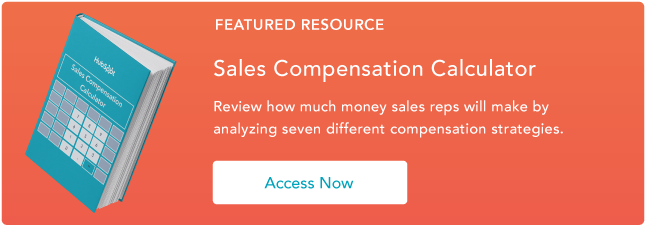Sales compensation programs are powerful. If you want to sell more sparkly widgets and fewer striped widgets, increase the incentive pay for sparkles. Easy, right?

Not quite. Sales incentive programs can quickly grow complicated -- and for every driver of behavior, there are several wrong roads your salespeople can go down.
To make sure that doesn’t happen, follow these dos and don’ts.
How to Design a Sales Compensation Plan
1) Begin your plan with strategy and sales roles.
Set your calculators to the side for now. The sales strategy answers questions about the types of products and services you’re going to focus on, your target industries, and your sales potential and profitability goals. The answers to these questions must be clear before you introduce metrics to drive behaviors to those goals.
You should also understand the sales talent you will need. Hunters? Farmers? Inside salespeople? Channel partners? Each of these roles will require a separate sales incentive plan.
Don’t skip this step and jump straight to mechanics (#3). Many sales organizations do just that and are left with a plan that, at best, asks the salespeople to guess at strategic priorities, and, at worst, drives them to sell the wrong products and services.
2) Frame the plan with solid fundamentals.
First, determine the target pay (Total Target Compensation, or TTC) for each role. Next set the pay mix, which is the proportion of salary and incentive at quota. Pay mix will vary by job type in an organization and is driven by several factors, including characteristics of your sales process, the type of sale, and customer personas. For example, a role focused on new customer acquisition for mid-sized accounts will likely have more incentive pay as a percentage of TTC (perhaps 50% base salary and 50% target incentive) than a role focused on current customer management for major accounts (perhaps 70% base salary and 30% target incentive). Finally, make sure your plan includes upside potential -- incentive pay above TTC -- for your top performers. Upside is a critical component to help the organization attract and retain the best talent in its market.
Don’t underpay your high performers. These people are usually motivated by earnings, and if they’re not being paid significantly more than the average performers, they’ll most likely seek employment elsewhere.
3) Link pay and performance.
Once you’ve set the foundation, it’s time to link those elements to some real action. Performance measures define the focus areas that are most important for each role. Each measure should represent the most significant pieces of the sales strategy that the role can control, such as revenue for a salesperson versus customer retention for an account manager. A challenge for many organizations is determining which measures should be included in the sales compensation plan, which should be part of the performance management program, and which should simply be core expectations of that job.
For each measure, the organization must define the level at which that measure will be tracked for the plan. For example, the organization may define a revenue measure for a sales rep at an individual or regional level. Each measure will also be measured and paid on a certain timeframe, such as monthly or quarterly. The decisions around measurement levels and timing can have a direct impact on rep behavior. Measure too infrequently, and the rep may have little control over their payment. Measure too frequently and the cycle may be out of sync with a long sales process.
Mechanics create the connection between performance and pay and can be divided into three types. A rate-based mechanic (also known as a commission) usually pays a certain percentage of revenue or gross profit, or a certain dollar amount per unit of sale. A quota-based mechanic typically pays a target incentive for reaching a specific quota or goal and may scale its payout above and below that performance level. A link creates a relationship and interdependency between two measures or mechanics.
Don’t attach too many measures to a compensation plan. We recommend no more than three measures, and no measure should carry less than 10% weight. Remember the compensation plan doesn’t have to accomplish everything -- in fact, it can’t. Find a balance between what you should pay for and what you should manage to.
An effective sales compensation plan acts like a carrot, incentivizing your salespeople to sell the right products, at the right time, of the right volume, to the right prospects, and so on. Design yours with care, and you'll reap the rewards.


![The Ultimate Guide to Sales Compensation [New Data]](https://www.hubspot.com/hubfs/salescompensationplans.webp)








